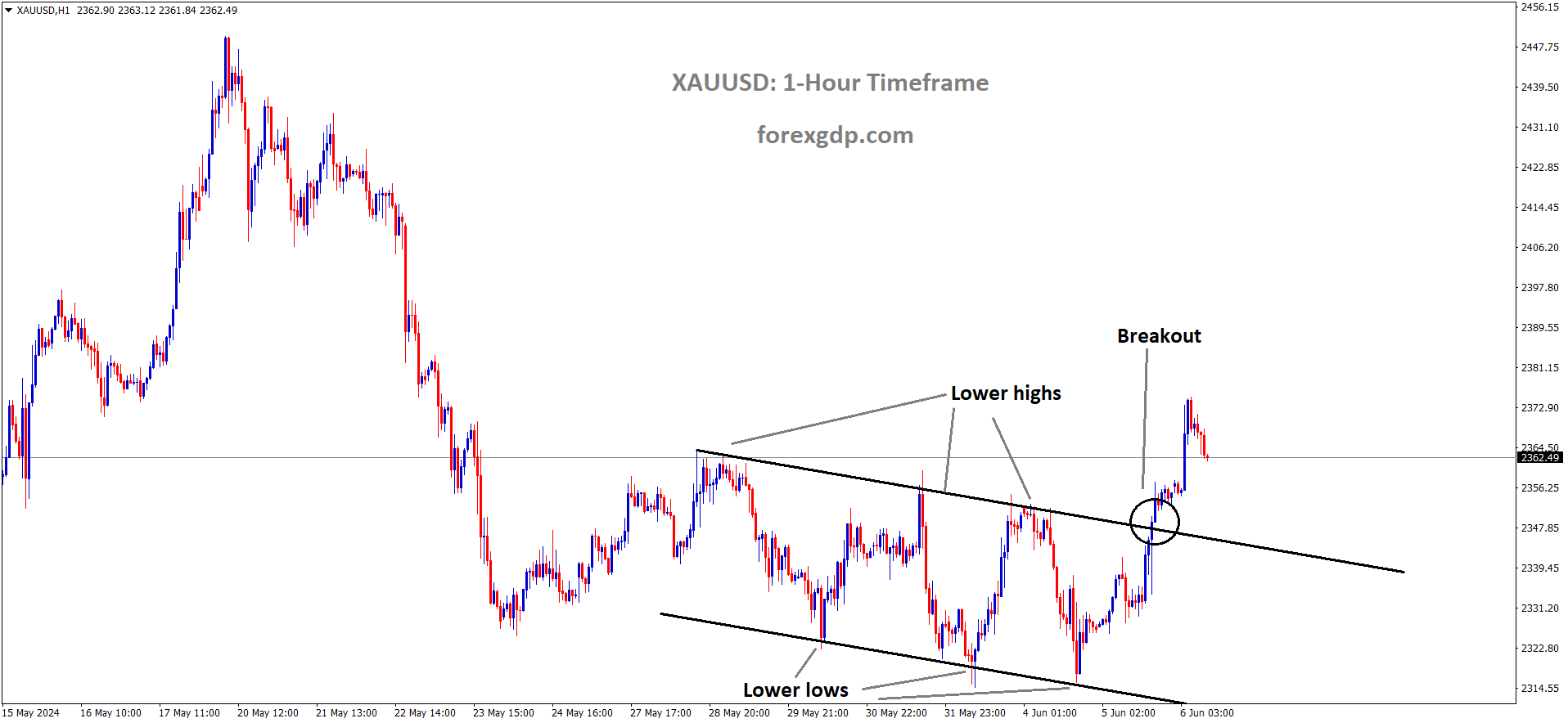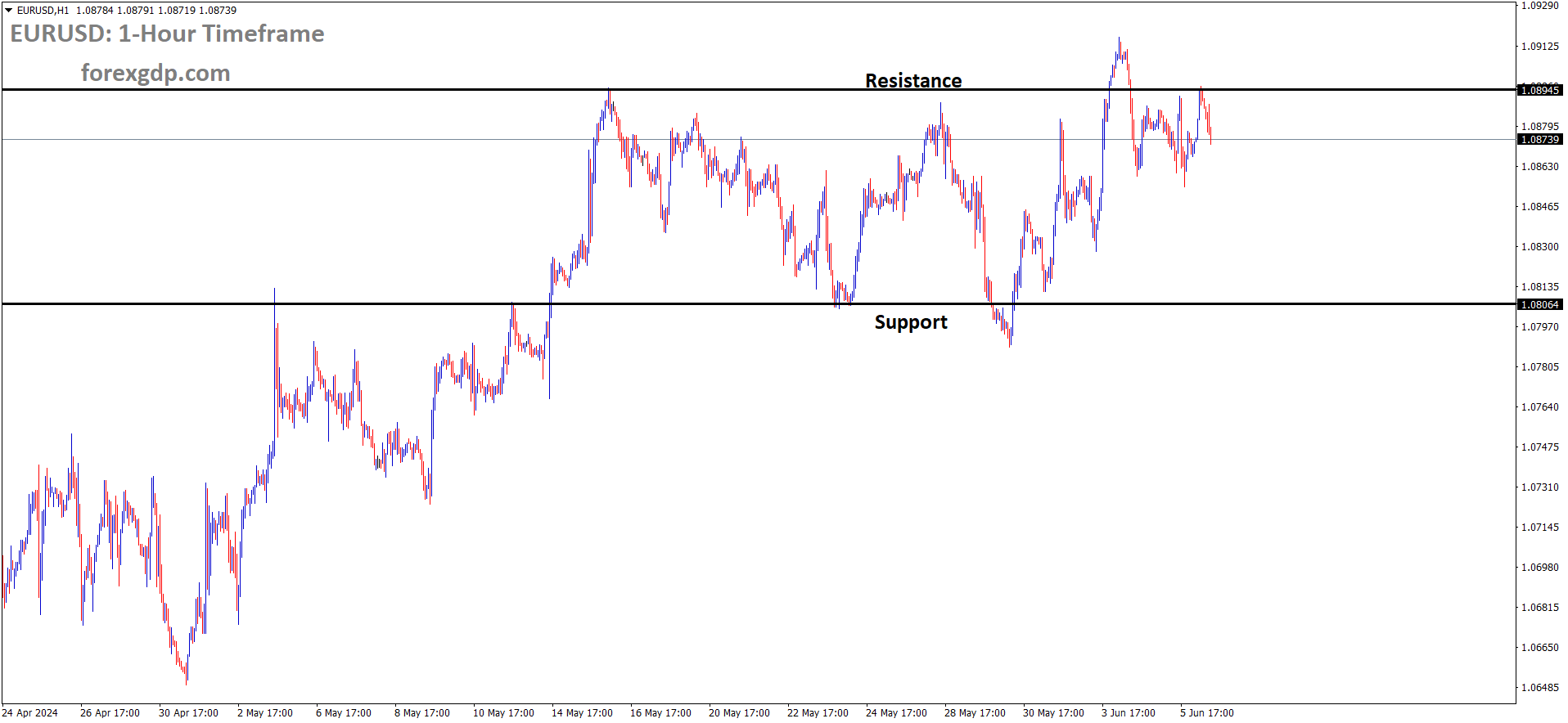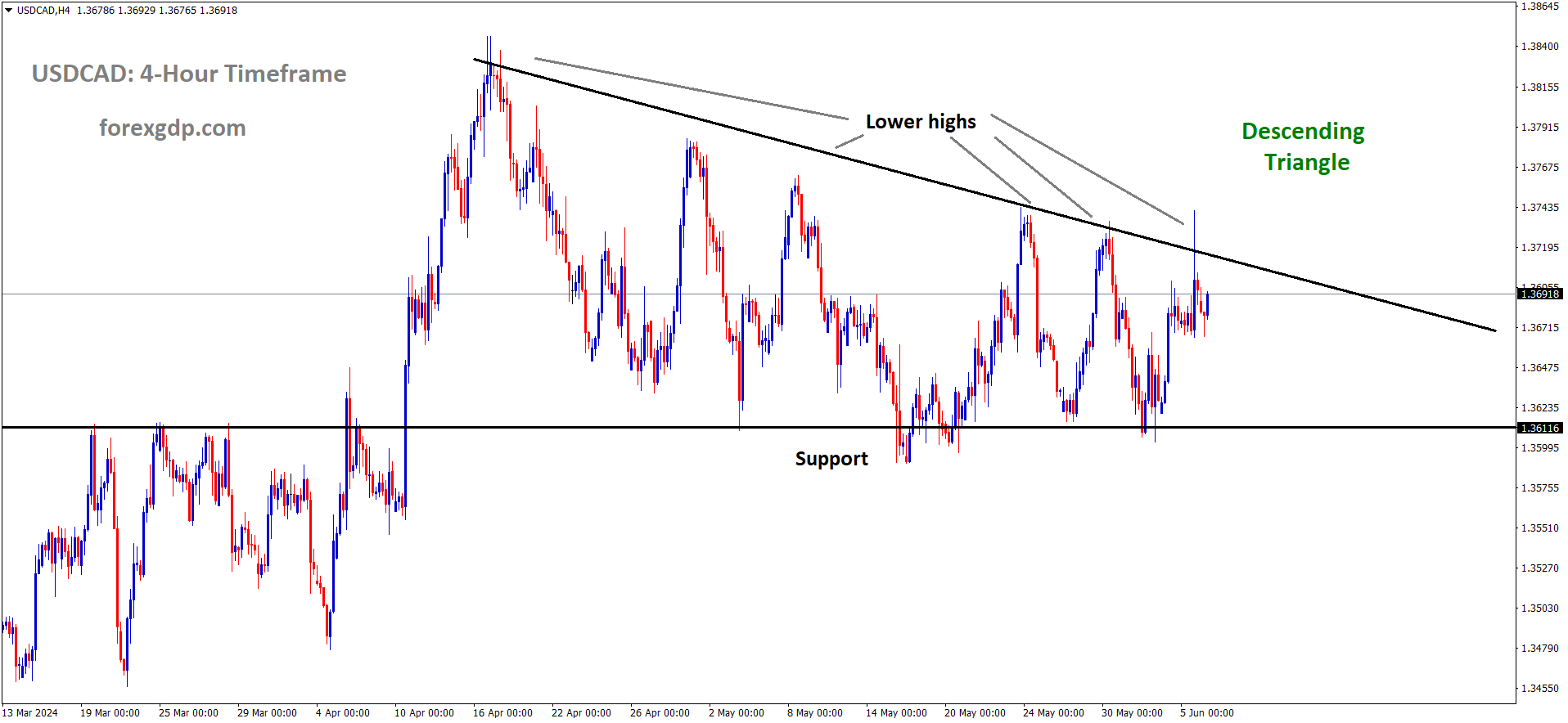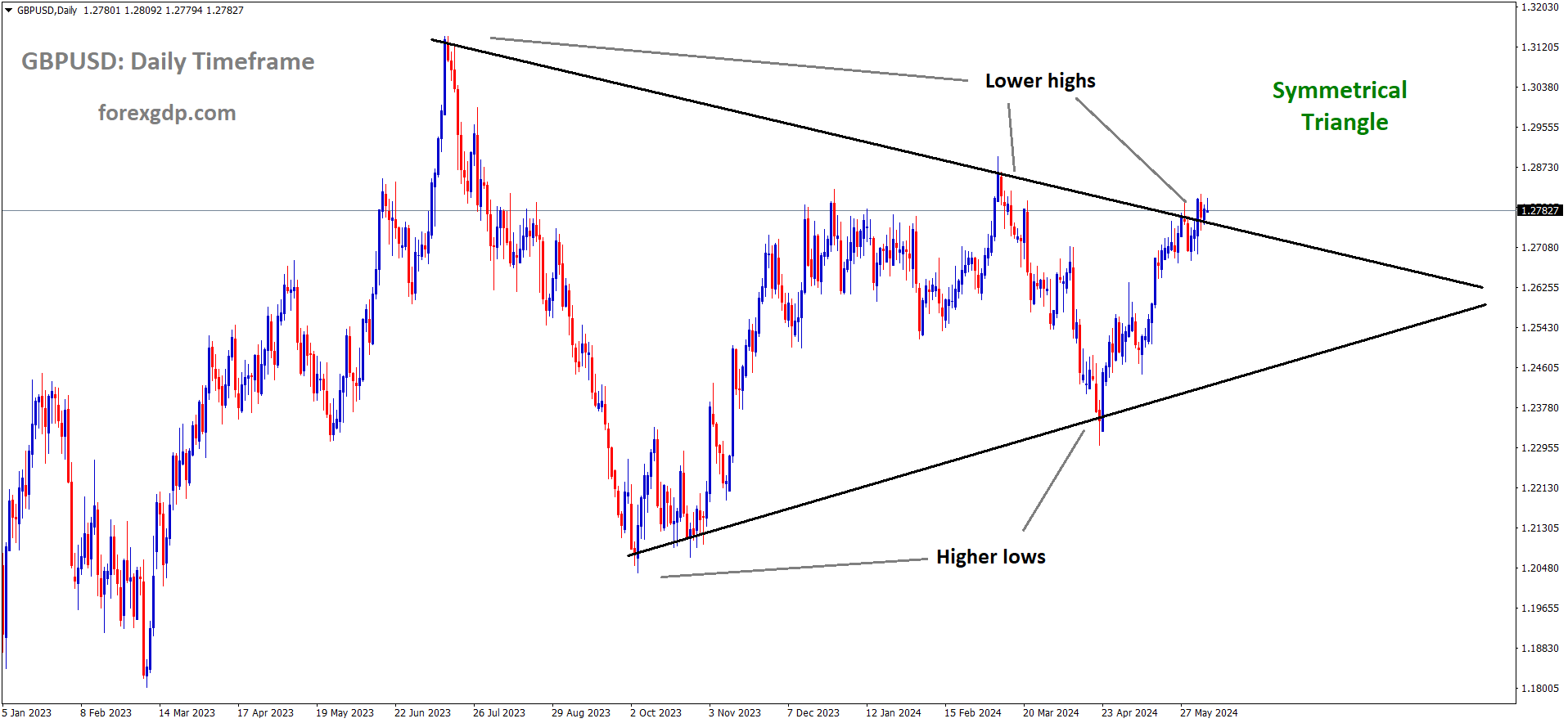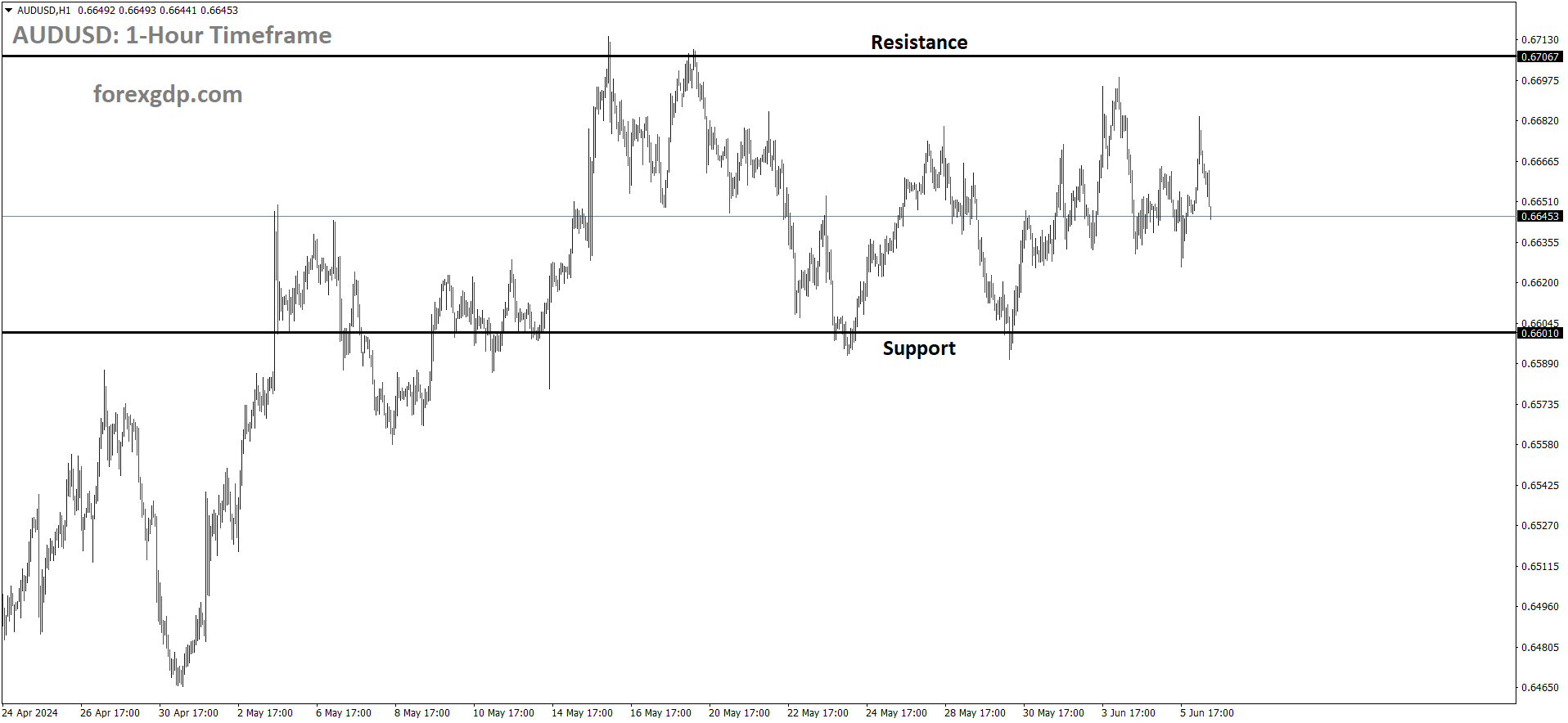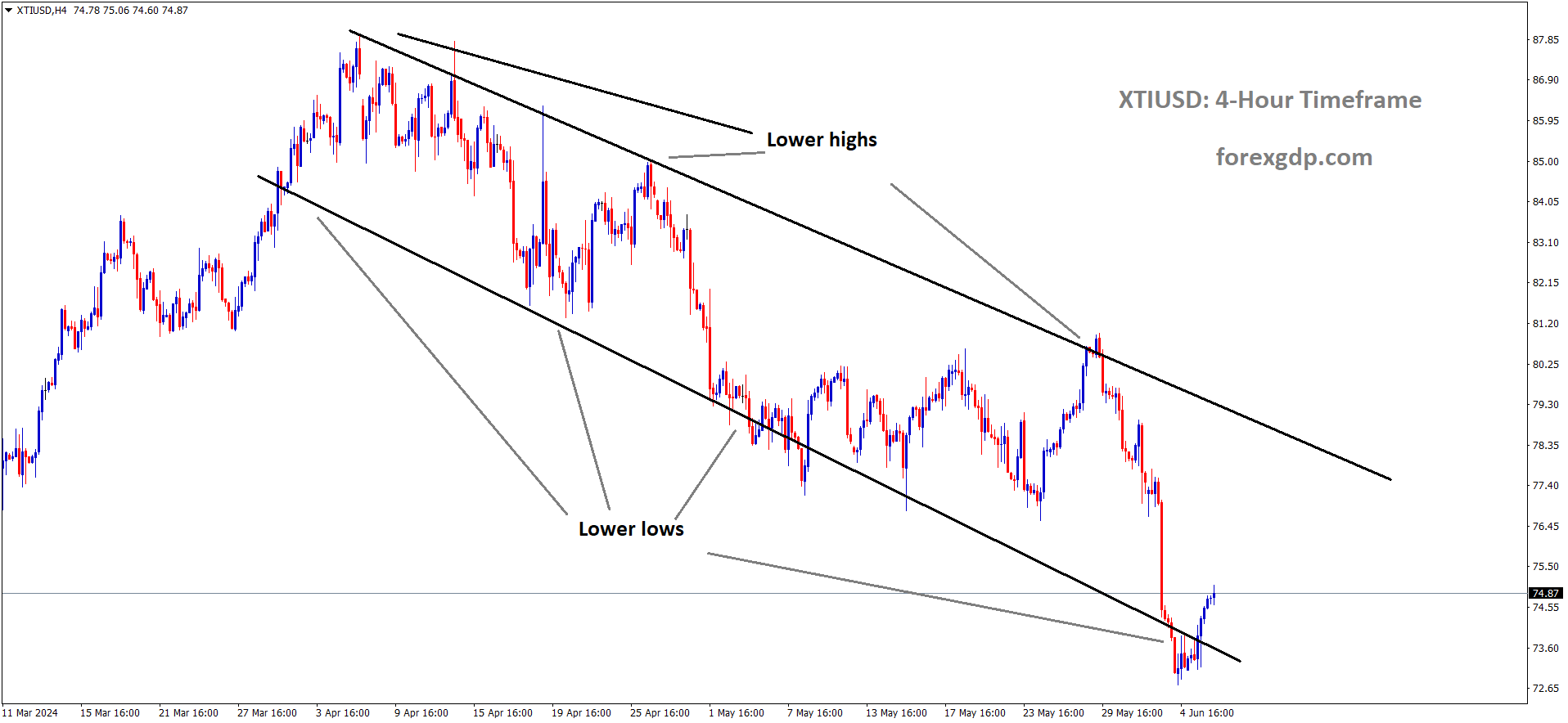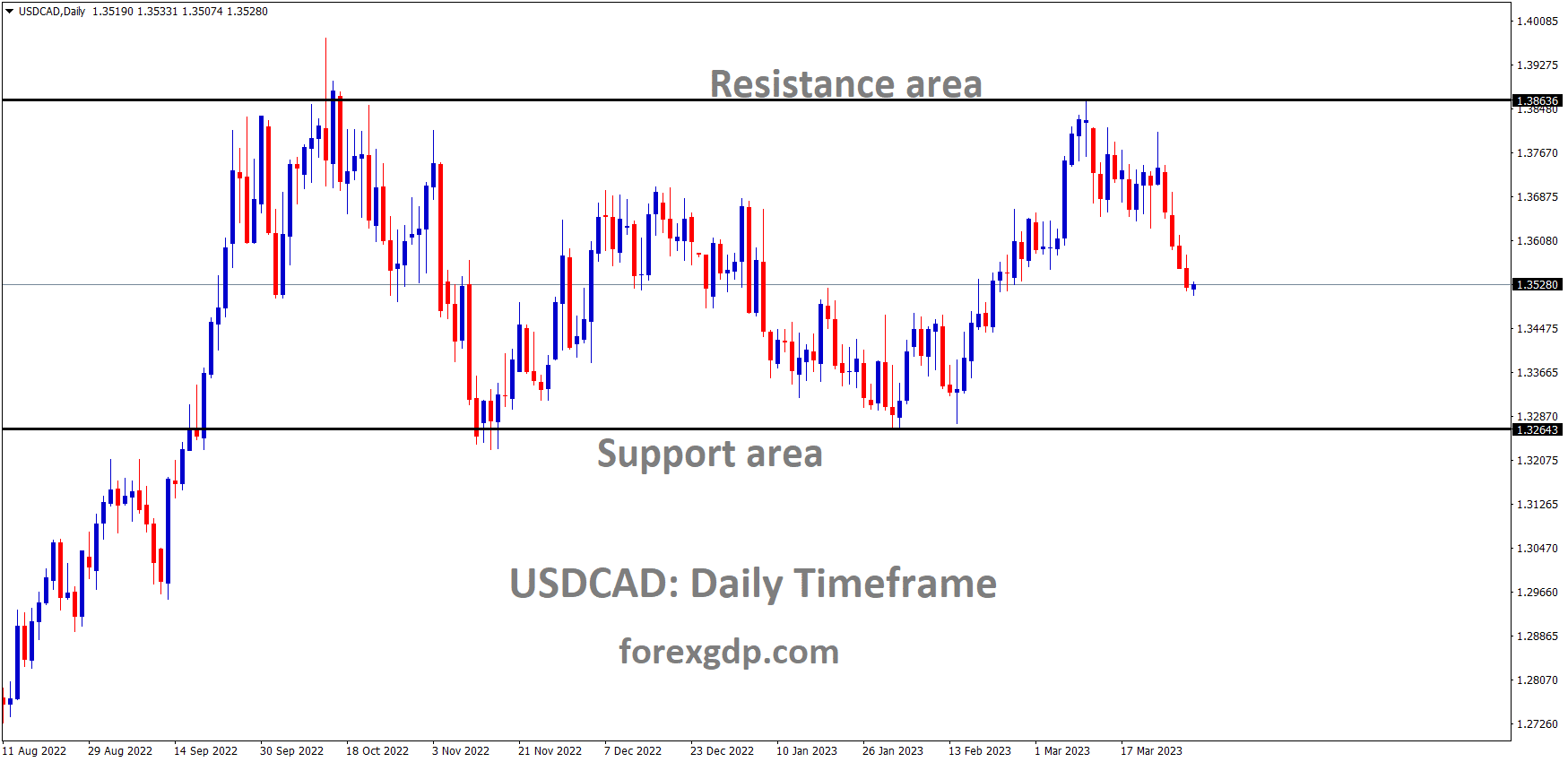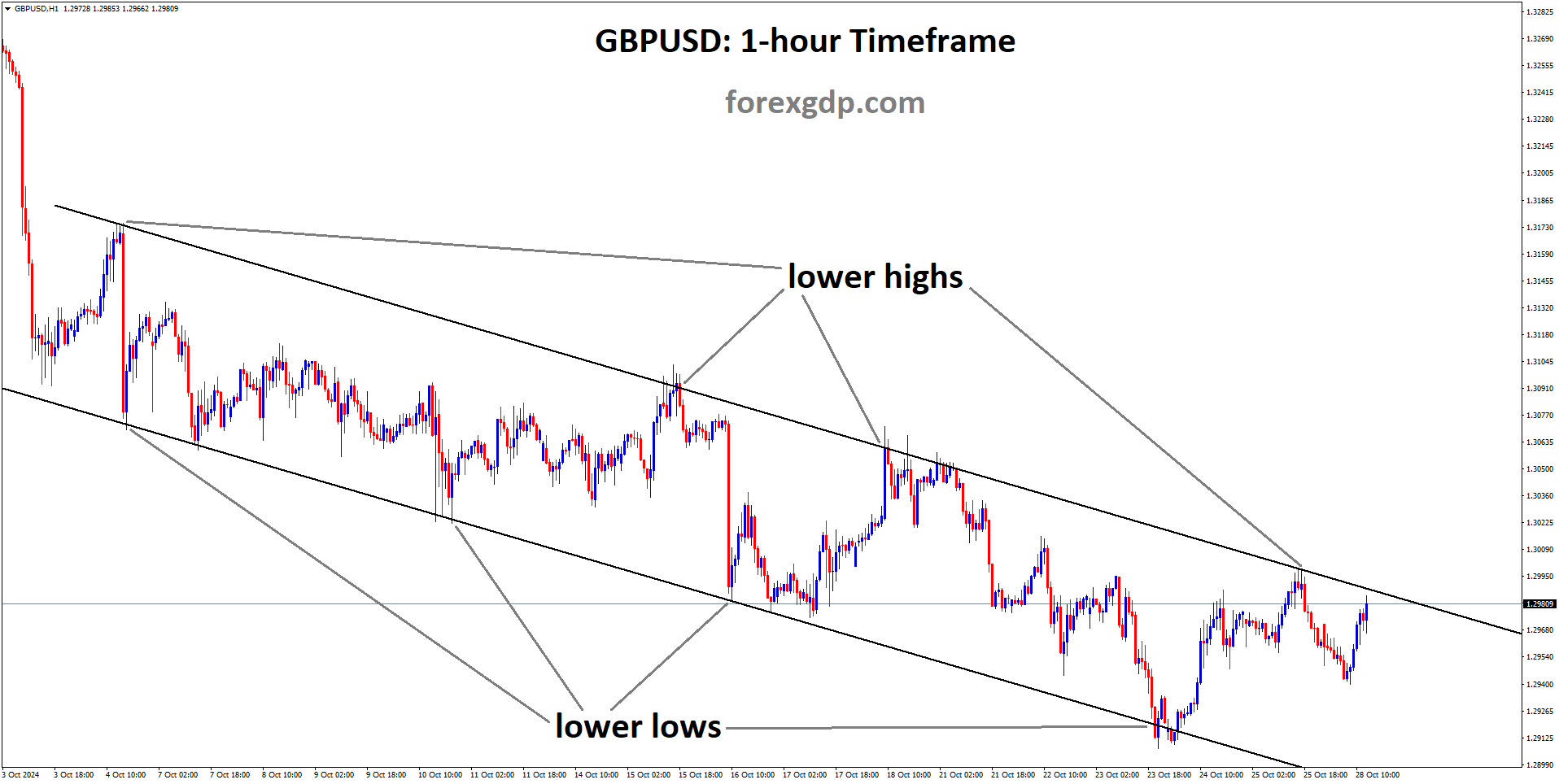USDJPY – BOJ’s Ueda Emphasizes 2% Price Expectations
The BoJ Governor Kazao Ueda said inflation is yet to reach the 2% target, still below 2% target only. Be cautious on rate hike moves to avoid Big mistake in the History of Japan economy. So Be patience, check Financialmarket conditions post- March exit from zero rates. There are are more uncertainities in the all sector, we keep reduce Bond buying step by step before exit.
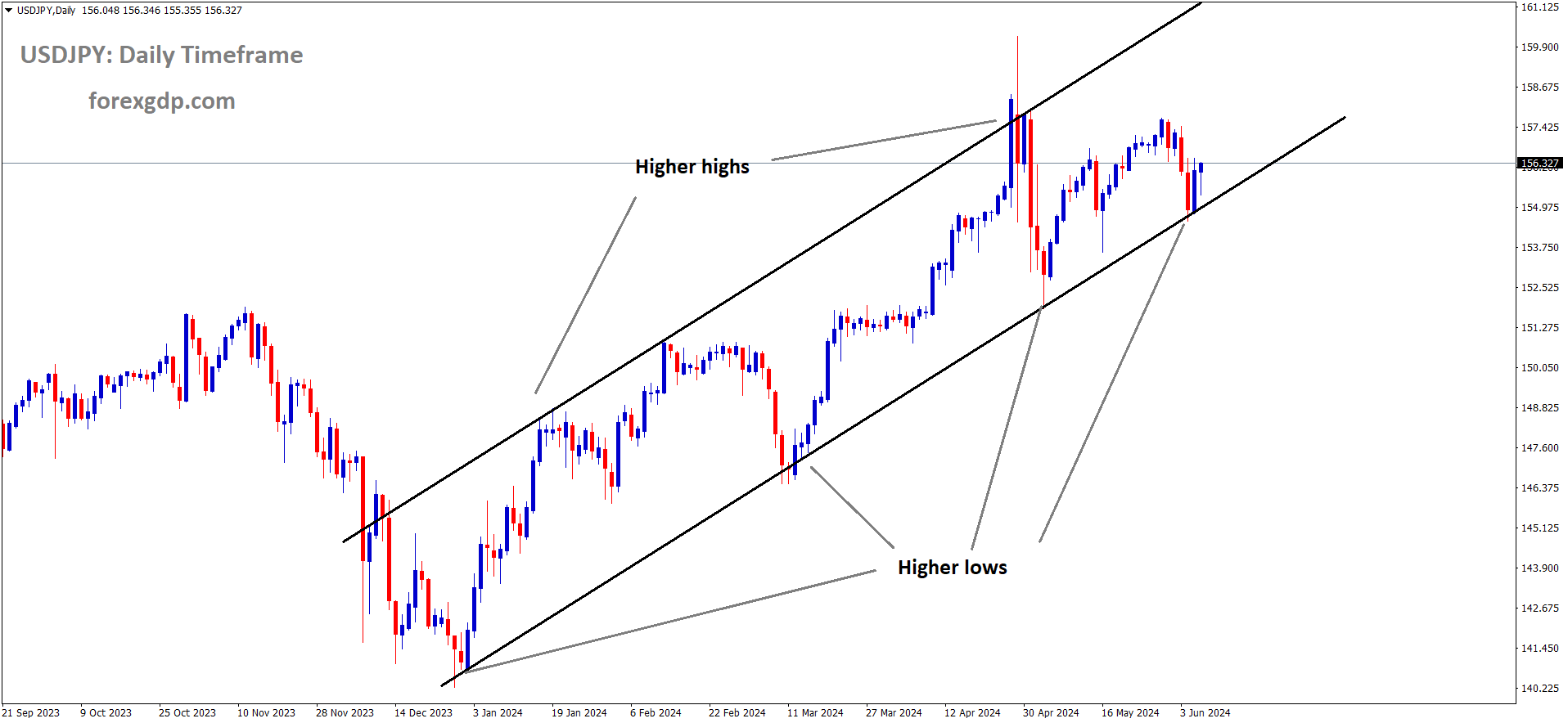
USDJPY is moving in an Ascending channel and the market has rebounded from the higher low area of the channel
On Thursday, Bank of Japan (BoJ) Governor Kazuo Ueda addressed the inflation expectations, highlighting that they are showing a gradual uptrend but have not yet reached the targeted 2% mark. Ueda emphasized the central bank’s approach to monetary policy, emphasizing caution to prevent significant errors in interest rate adjustments.
Here are the key points from Ueda’s statements:
– Inflation expectations continue to linger below the desired 2% threshold.
– The BoJ intends to proceed carefully when considering changes to interest rates.
– There are uncertainties surrounding the determination of the neutral rate, a crucial factor in monetary policy decisions.
– The central bank plans to scale back bond purchases as part of its exit strategy.
– Ueda mentioned the importance of monitoring financial market conditions following the policy shift in March.
XAUUSD – Gold Price Hits Two-Week High Amid Fed Rate Cut Hopes, Weaker US Dollar
The Gold prices are pushed up after the central banks one by one announcing rate cuts. This is favorable for storage costs of Gold to lower in the lockers. Yesterday BoC do rate cut 25 bps, Today ECB is expected to do 25bps. Next FED is expected in the September month todo rate cuts. Yesterday US ADP data came at 155K versus 188K printed in the April month.
XAUUSD has broken the Descending channel in upside
The near-term bias remains bullish, with expectations of major central banks lowering borrowing costs to stimulate economic activity. The Bank of Canada (BoC) recently lowered its benchmark rate for the first time in four years, expressing concerns about slowing economic growth. Additionally, the European Central Bank (ECB) is anticipated to cut interest rates for the first time since March 2016 at its June policy meeting.
Market sentiment suggests an increased likelihood of an imminent rate cut by the Federal Reserve (Fed) due to signs of a US economic slowdown. This expectation has kept US Treasury bond yields near their lowest levels in over two months, hindering the US Dollar’s ability to extend its recent modest recovery. Geopolitical tensions in the Middle East also continue to support gold prices as investors seek safe-haven assets. However, upside potential for XAU/USD may be limited as traders await the release of the US Nonfarm Payrolls (NFP) report on Friday.
The release of mixed US macroeconomic data on Wednesday reinforced expectations of Fed rate cuts, pushing US Treasury bond yields lower and benefiting gold prices. The ADP report showed a rise in private sector employment, albeit lower than anticipated, while the ISM Services PMI exceeded expectations. Softer US Personal Consumption Expenditures (PCE) Price Index data also suggested easing inflationary pressures, contributing to the decline in US Treasury bond yields. The benchmark 10-year US Treasury yield reached a two-month low, while the 2-year yield slipped amid speculations of disappointing official job data.
Although the US Dollar initially responded positively to the data, further declines in US Treasury bond yields supported gold prices, lifting them to a fresh weekly peak during the Asian session on Thursday. Traders are now awaiting the release of Weekly Initial Jobless Claims data from the US for further direction, with focus remaining on the Nonfarm Payrolls (NFP) report scheduled for Friday.
EURUSD – ECB Set to Cut Interest Rates for First Time Since 2019
The ECB is expected to cut the rates of 25 bps today from 4.00% to 3.75%, due to services inflation above 4% and Annual headline inflation is 2.6% printed in the May month. Tight labor market losing and Manufacturing, Industrial production, consumer spending is lower, Supply is higher in the Euro zone. So Euro currency is little lower against counter pairs ahead of Rate cut meeting today.
EURUSD is moving in the Box pattern and the market has fallen from the resistance area of the pattern
The European Central Bank (ECB) is poised to announce its first interest rate cut since 2019 on Thursday at 12:15 GMT.
Accompanying the interest rate announcement will be the publication of updated staff economic projections. ECB President Christine Lagarde will then hold a press conference at 12:45 GMT.
Market expectations for the European Central Bank interest rate decision:
A reduction of 25 basis points (bps) to the benchmark Deposit Facility Rate is widely anticipated. This move follows the conclusion of the Governing Council’s June monetary policy meeting and will lower the borrowing cost from a historic high of 4.0% to 3.75%.
Numerous ECB policymakers have consistently signaled a rate ct in June. Consequently, the primary focus will be on the central bank’s communication regarding the future trajectory of interest rates. Market participants will closely analyze the language used in the policy statement and listen to ECB President Christine Lagarde’s remarks during the press conference to assess the potential scope and timing of subsequent rate cuts this year.u
Despite Eurozone inflation nearing the central bank’s 2.0% target, persistent services inflation (exceeding 4.0% annually in May) has led to speculation that the ECB may not engage in an aggressive easing cycle. Additionally, Eurozone annual inflation increased from 2.4% in April to 2.6% in May, surpassing the forecast for a 2.5% rise.
Moreover, a robust economic recovery and tight labor market conditions in Europe are expected to dissuade the ECB from committing to further rate cuts beyond June.
Lagarde may adopt a data-dependent approach and refrain from providing explicit guidance on the policy outlook. According to BNP Paribas’ chief Europe economist Paul Hollingsworth, there may be less clarity regarding future actions compared to previous meetings.
Market expectations currently suggest fewer than 60 bps of cuts this year, implying two rate adjustments and less than a 50% likelihood of a third cut. This contrasts with projections from the ECB’s April meeting, which anticipated three rate cuts, and forecasts from January 2024, which predicted at least five rate reductions.
USDCHF – remains below 0.8950 on renewed Fed rate cut expectations
The Swiss Unemployment rate at 2.3% in the May month versus same reading in the last month. Swiss CPI data came at 0.30% MoM in the May month versus 0.40% printed in the last month. SNB is like to cut the rates on June 28 due to inflation reading came at below SNB Goal.
USDCHF is moving in the Descending channel and the market has reached the lower high area of the channel
This movement is attributed to the prevailing weakness in the US Dollar (USD), which stems from mounting speculation surrounding the Federal Reserve (Fed) potentially reducing borrowing costs starting from its September meeting, thereby creating a challenging environment for the pair.
Recent economic indicators, including the subdued US Personal Consumption Expenditures (PCE) Price Index data released the previous week and a lackluster Manufacturing PMI report earlier this week, have rekindled expectations of interest rate cuts by the Fed in the foreseeable future. Consequently, this sentiment exerts downward pressure on the USD across the board. Market sentiment reflects a notable shift, with approximately a 70% probability of Fed rate cuts in September, a significant uptick from 54.9% at the commencement of the week, as indicated by the CME FedWatch tool.
Investor focus is now redirected towards the impending release of key US labor market data scheduled for Friday. This data includes the eagerly anticipated US Nonfarm Payrolls (NFP), Unemployment Rate, and Average Hourly Earnings figures. Projections suggest an anticipated addition of 185,000 jobs in May, while the Unemployment Rate is forecasted to remain stable at 3.9% for the same period. Should the employment data reveal signs of weakness, it may embolden the Fed’s stance on implementing monetary policy easing measures.
Turning to the Swiss economy, recent reports from the State Secretariat for Economic Affairs (SECO) unveiled that Switzerland’s unemployment rate held steady at 2.3% in May, aligning with April’s figures and market expectations. Additionally, data released earlier this week indicated that Switzerland’s monthly Consumer Price Index (CPI) inflation in May saw a modest increase of 0.3% month-on-month, falling slightly short of market consensus. This subdued inflationary backdrop has fueled anticipation of potential rate cuts by the Swiss National Bank (SNB) at its forthcoming meeting on June 28, a prospect that may apply downward pressure on the Swiss Franc (CHF) in the near term.
USDCAD – slips near 1.3650 on boosted risk sentiment and elevated oil rates
The Canadian Dollar moved downwards after the BoC cut the rates to 25bps as 4.75% from 5.00% last day. This move is drawback for Canadian Dollar against counter pairs. Still inflation below 2% target of BoC Goal, Canadian Economy is moving down due to supply higher than demand , So This move of rate cut done by BoC Side.
USDCAD is moving in the Descending triangle pattern and the market has reached the lower high area of the pattern
This movement came as the US Dollar (USD) faced challenges following the release of mixed economic data in the United States (US), sparking speculation about potential interest rate cuts by the US Federal Reserve (Fed). Market participants are eagerly awaiting key US employment data releases scheduled for Friday, particularly the Average Hourly Earnings and Nonfarm Payrolls reports.
The sentiment among investors regarding the possibility of a Fed rate cut has contributed to the weakening of US Treasury yields, thereby exerting downward pressure on the US Dollar and the USD/CAD pair. This sentiment aligns with a Reuters poll conducted from May 31 to June 5, which revealed that nearly two-thirds of economists anticipate an interest rate cut by the Fed in September. According to the CME FedWatch Tool, the likelihood of a Fed rate cut of at least 25 basis points in September has surged to nearly 70.0%, up from 47.5% just a week earlier.
On the Canadian Dollar (CAD) front, the rise in crude oil prices has supported demand for the CAD. Canada, being the largest oil exporter to the United States (US), benefits from higher oil prices. West Texas Intermediate (WTI) crude oil prices continued their upward trend, reaching approximately $74.30 per barrel by the time of writing.
In June, the Bank of Canada (BoC) implemented a widely anticipated 25 basis points reduction in its key interest rate, bringing it to 4.75%. This decision marked a departure from the tightening cycle, which had seen 11 consecutive months of peak interest rates. The BoC’s shift to a less stringent monetary policy stance was driven by sustained disinflation trends in Canada, moving toward the central bank’s target range of 1%-3%. Traders are now turning their attention to Friday’s upcoming Canadian labor figures for further market direction.
USD INDEX – USD Gains, Focus on Further Labor Market Data
The US Dollar stabilized after the mixed data printed last day, ADP Private employment change came at 155K in the May month versus 188K printed in the April month, Services PMI data printed at 53.8 in the May month from 49.4 printed in the April month, Expected 50.8. So Mixed signals of Data stablised the US Dollar depreciation last day. September month rate cut is more expected from polls of analysts is 60% other than June and July month polls.
USD INDEX is moving in an Ascending channel and the market has reached the higher low area of the channel
Despite mixed signals about the US economy on Wednesday, the US Dollar Index (DXY) continued to register gains. While the service sector performed well, the private sector employment data came in lower than expected, causing some moderate fluctuations in the market. Nevertheless, the overall outlook for the US economy remains resilient.
Market attention is now focused on upcoming labor market data, including Nonfarm Payrolls, Wage inflation, and Unemployment figures, scheduled for release on Friday. These data points will offer deeper insights into the health of the US economy, with market participants closely monitoring them to adjust their expectations regarding potential rate cuts by the Federal Reserve (Fed).
In the latest developments:
– The ISM Services PMI for May rebounded to 53.8, surpassing market expectations of 50.8 and showing significant growth compared to April’s reading of 49.4.
– The ADP Employment Change report indicated that US private sector employment increased by 152K in May. However, this figure fell short of the market expectation of 173K and was lower than the revised 188K additions reported for April.
– Despite these mixed economic signals, the likelihood of interest rate cuts in June and July remains low. However, the odds of rate cuts in September stand at around 60%.
GBPUSD – Gains Near 1.2800 Amid Mixed US Data, Fed Rate Cut Expectations
The UK Services PMI for the month of May came at 52.9 from 55.0 printed in the April month, Composite PMI data fell down to 53.0 from 54.1 printed in the April month. GBP is slight down against USD after the data printed. US Services PMI data came at 53.8 in the May month from 49.4 printed in the April month and 50.8 is expected.
GBPUSD is moving in the Symmetrical triangle pattern and the market has reached the top area of the pattern
Traders have begun to factor in the possibility of two interest rate cuts by the Federal Reserve (Fed) this year, following indications of slower-than-expected growth in the US economy during the first quarter. Later on Thursday, market participants will be closely watching the release of US weekly Initial Jobless Claims and Balance of Trade data.
In recent months, Federal Reserve officials have emphasized the importance of maintaining higher interest rates for a longer duration until the central bank is confident that inflation is progressing towards the Fed’s 2% target. However, the disappointing US May ISM Manufacturing Purchasing Managers’ Index (PMI) report and weaker Q1 Gross Domestic Product (GDP) figures have heightened expectations of monetary policy easing by the Fed in September. This sentiment has weighed broadly on the Greenback. Currently markets are pricing in a nearly 70% probability of a Fed rate cut in September, up from 54.9% at the beginning of the week, according to the CME FedWatch tool.
On Wednesday, the Institute for Supply Management (ISM) reported an improvement in the US Services PMI to 53.8 in May, compared to 49.4 in April. This exceeded expectations, which were set at 50.8.
Conversely, the UK services sector experienced slower growth in May. The UK S&P Global Services PMI fell to a six-month low of 52.9 from 55.0 in April, aligning with expectations. Meanwhile, the Composite PMI declined to a two-month low of 53.0 in May, down from a one-year high of 54.1 in April. With the absence of top-tier UK economic data releases, the movement of the GBP/USD pair will likely be influenced by developments related to the USD.
AUDUSD – Australia’s Trade Surplus Widens to 6,548M in May, Beating 5,500M Expectation
The Australian Trade surplus data came at 6548M in the May month versus 5500M is expected, 5024M is printed in the April month. Exports data plunged to -2.5% MoM to the 0.10% MoM in the previous month. Imports data plunged to -7.5% from 4.2% printed in the previous month. The Australian Dollar moved up after the data printed.
AUDUSD is moving in the Box pattern and the market has fallen from the resistance area of the pattern
Australia’s trade surplus widened to 6,548 million AUD in May, surpassing the expected 5,500 million AUD and the previous reading of 5,024 million AUD, according to the latest foreign trade data published by the Australian Bureau of Statistics on Thursday.
Further details reveal that Australia’s exports of goods and services in May declined by 2.5% on a monthly basis, compared to a slight increase of 0.1% in the previous month. Meanwhile, imports of goods and services fell sharply by 7.2% in May, a significant change from the 4.2% increase observed in the previous month.
NZDUSD – Climbs to 3-Month Highs Above 0.6200 on Fed Rate Cut Expectations
The China Caixin Services PMI data came at 54.0 in the May month from 52.5 printed in the April month shows well moved up from Plunging economy in the China. This directly boosted the Kiwi economy by exports in the larger side. Yesterday US Mixed Domestic data keeps Kiwi stronger against USD.
NZDUSD is moving in an Ascending channel and the market has fallen from the higher high area of the channel
This surge is driven by investor anticipation of two interest rate cuts by the Federal Reserve (Fed) in the current year, leading to a decline in the value of the US Dollar (USD) against the New Zealand Dollar (NZD). Ahead of the highly-awaited US Nonfarm Payrolls (NFP) data on Friday, investors are closely watching the US weekly Initial Jobless Claims scheduled for Thursday.
Despite the stronger-than-expected US ISM Services Purchasing Managers Index (PMI) data for May, which showed an improvement from 49.4 in April to 53.8, the USD’s recovery was short-lived. Weaker US GDP figures and signs of a deteriorating labor market have heightened expectations of Fed rate cuts, which could exert further pressure on the USD in the near future. A majority of analysts surveyed by Reuters anticipate the Fed to reduce its key interest rate in September and once more before the year ends. Currently, traders are pricing in approximately a 70% likelihood of a Fed rate cut in September, according to CME FedWatch.
On the NZD side, positive Chinese data has lent support to the NZD as China is New Zealand’s largest trading partner. On Wednesday, the Caixin Services PMI for China rose to 54.0 in May, surpassing market expectations of 52.6 and marking an increase from April’s reading of 52.5.
CRUDE OIL – WTI climbs near $74.50 amid growing Fed rate cut expectations
The US FED expected to do rate cut in the September month fears Dragged US Dollar against crude Oil last day, due to mixed bags of domestic data printed last day, EIA informed ending May 31 week Crudeoil stock is 1.23 Million barrels versus -4.3 Million Barrels last week, expected 2.2 Million Barrels decline .
XTIUSD Crude oil price is moving in the Descending channel and the market has rebounded from the lower low area of the channel
This surge in oil prices can be attributed to increasing speculation that the US Federal Reserve (Fed) may implement an interest rate cut in September. Such a move could potentially reduce borrowing costs in the United States, the world’s largest oil consumer, stimulating economic activity and subsequently boosting oil demand.
The recent mixed economic data from the United States has fueled expectations of a Fed rate cut. While the ISM US Services Purchasing Managers’ Index (PMI) for May surged to 53.8, its highest level in nine months, and exceeded expectations, the ADP US Employment Change report revealed a modest addition of 152,000 jobs to payrolls in May, falling short of forecasts and indicating a slowdown in job creation.
A Reuters poll conducted from May 31 to June 5 revealed that nearly two-thirds of economists now anticipate a Fed rate cut in September. This sentiment, along with bearish supply news from the Organization of the Petroleum Exporting Countries and its allies (OPEC+), has influenced market dynamics. According to the CME FedWatch Tool, the probability of a 25 basis points rate cut by the Fed in September has surged to nearly 70.0%, up from 47.5% just a week earlier.
However, the upside potential for oil prices may be limited by recent data from the US Energy Information Administration (EIA). The EIA’s Crude Oil Stocks Change report for the week ending May 31 indicated a surprising increase in crude oil inventories by 1.233 million barrels, reversing the previous week’s decline and defying market expectations of a drawdown.
Don’t trade all the time, trade forex only at the confirmed trade setups
Get more confirmed trade signals at premium or supreme – Click here to get more signals , 2200%, 800% growth in Real Live USD trading account of our users – click here to see , or If you want to get FREE Trial signals, You can Join FREE Signals Now!



